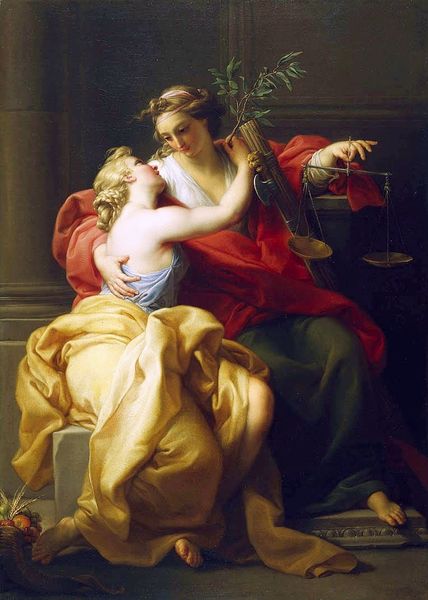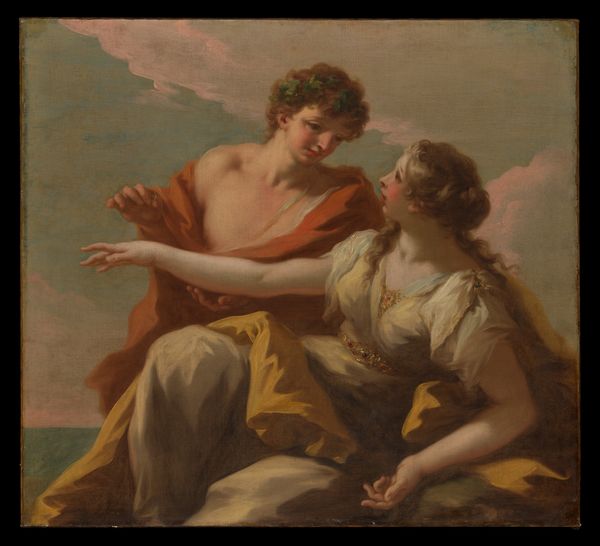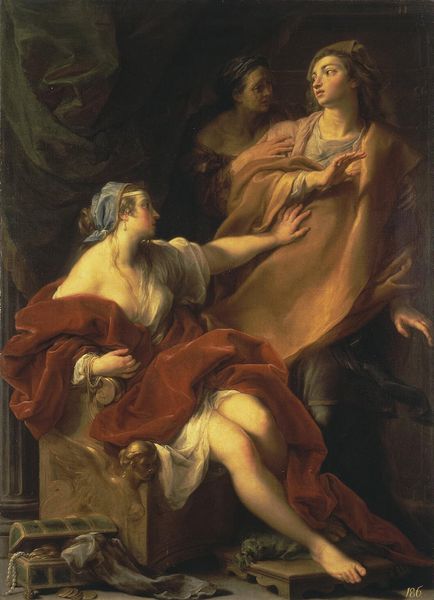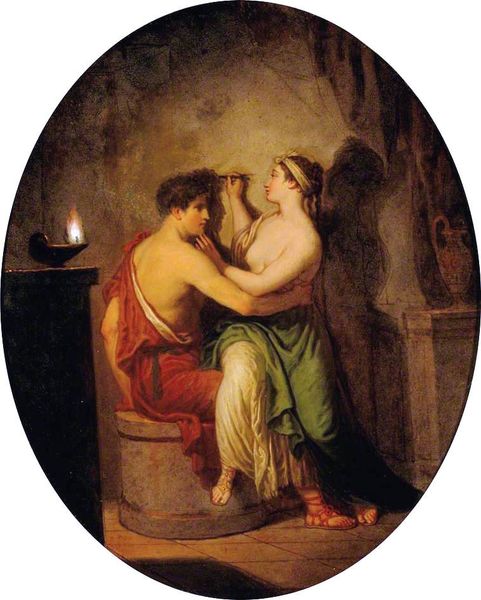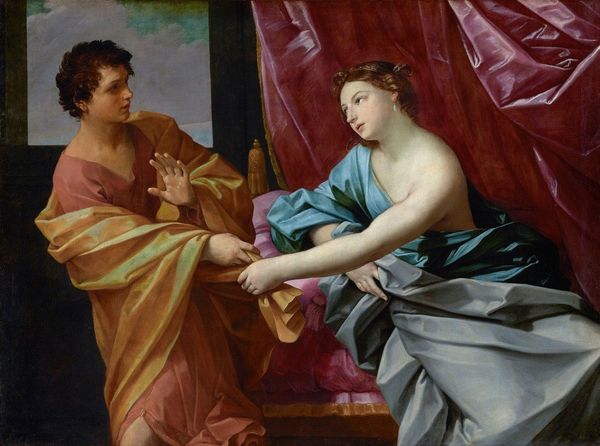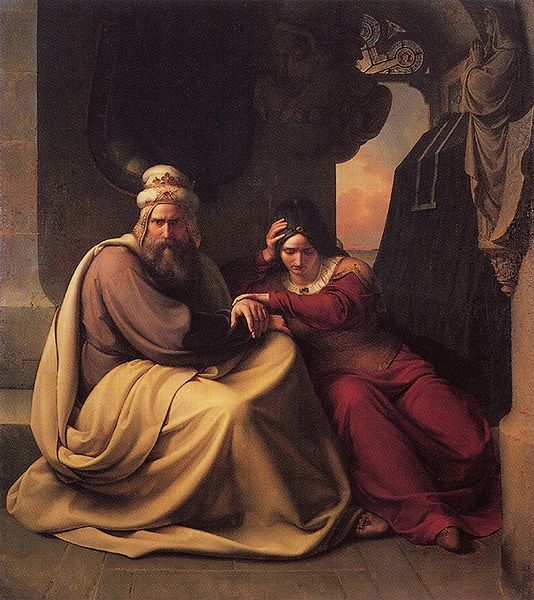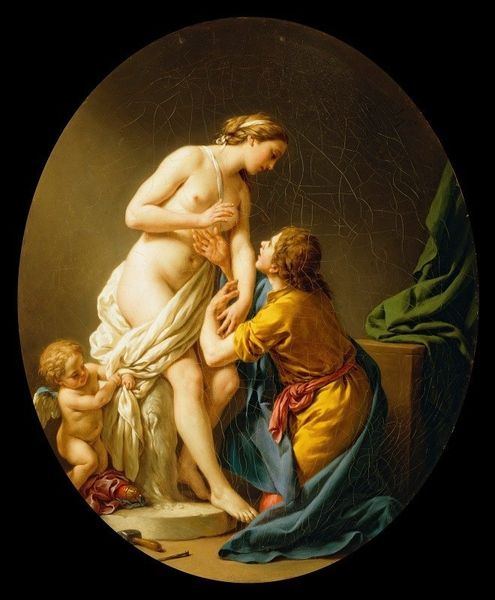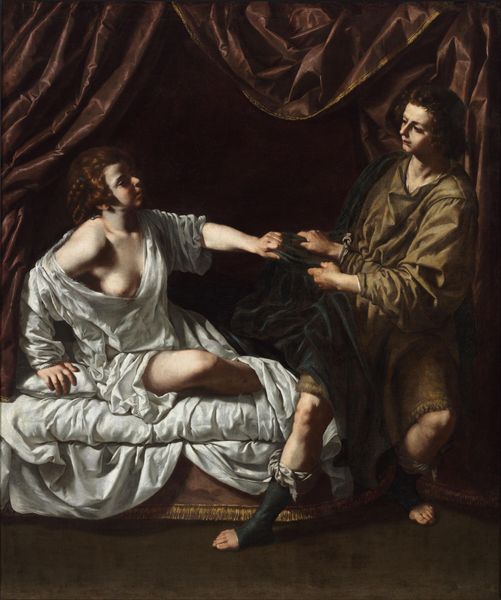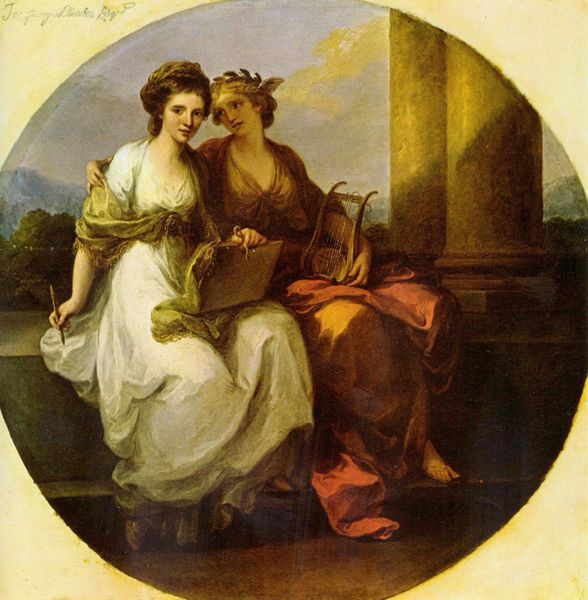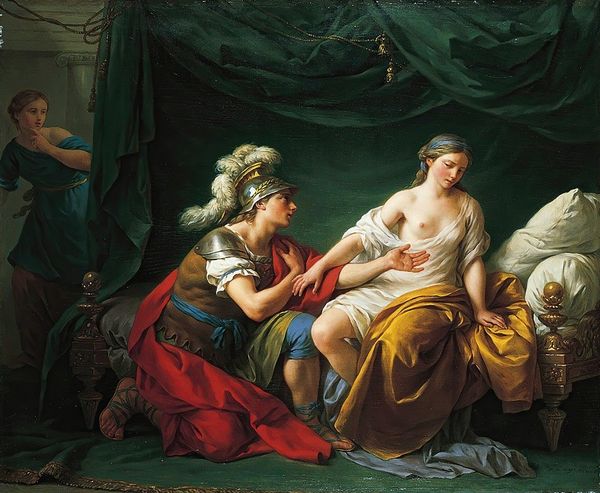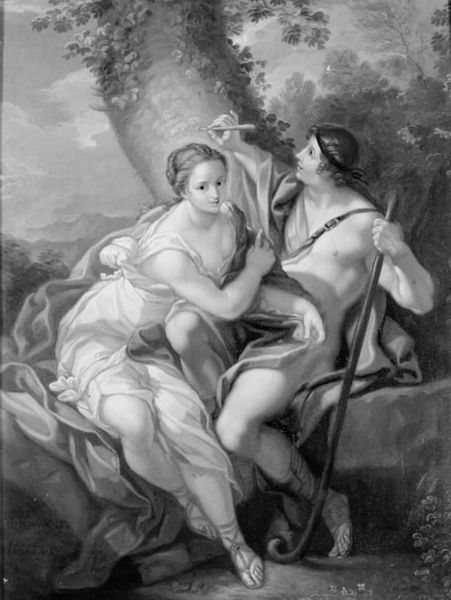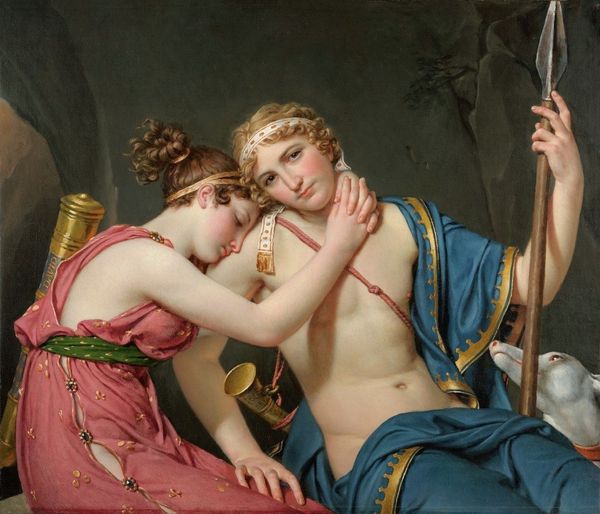
painting, oil-paint
#
portrait
#
allegory
#
narrative-art
#
painting
#
oil-paint
#
classical-realism
#
figuration
#
romanticism
#
history-painting
#
academic-art
Copyright: Public domain
Curator: Rembrandt Peale's 1811 painting, "The Roman Daughter," presents an intriguing, if slightly unsettling, tableau. What strikes you first about it? Editor: That the woman appears to be breast-feeding a chained man. It’s unexpected! Immediately I start to think about material reality here: the coarse stone blocks, the dull gleam of the chains contrasting against the luminosity of her draped gown. There's an imbalance of power in this composition. Curator: Exactly. It's based on a historical account where a woman, Pero, secretly breastfeeds her imprisoned and starving father, Cimon, who was sentenced to death. It's an act of incredible devotion, wouldn't you agree? It asks us to consider extremes of filial love, even sacrifice. And let’s face it, our own mortality. Editor: It’s definitely provocative and perhaps intentionally so. These kinds of visual narratives almost seem constructed to appeal to specific audiences, which tells us about how taste functions to both conceal and expose cultural expectations. The raw material here—paint, canvas— serves the idea. Curator: You know, there's this raw intimacy, but the artistic hand is ever-present in the composition, carefully modeling the figures to convey a powerful message. Her gaze skyward is interesting. The heavy darkness to the left seems to weigh on the figures, contrasting with the strong chiaroscuro to create depth and mood. Editor: Yes, this use of darkness and light. We are led to a story but I want to look at Peale's technical training here. There is obviously considerable study to present this kind of drama. Look at the careful articulation of the muscles in Cimon’s arms, versus the relative smoothness of Pero's flesh, for example. Curator: Ultimately, doesn’t the work celebrate survival against impossible odds and also a uniquely female form of defiance? Almost all else has been taken from them, yet she resists by making the most primal contribution of care, literally at the breast! Editor: I see a staged presentation, an artifice crafted from the materials that served class and gender politics. That said, it invites a deep look into social expectations in play— and also into Rembrandt Peale’s practice as a painter, and his own struggle as the son of a famous painter. Curator: Thank you! Well said. Food for thought.
Comments
No comments
Be the first to comment and join the conversation on the ultimate creative platform.
